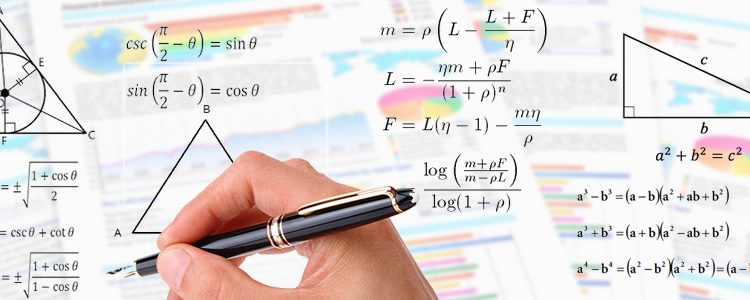How to Effectively Write a Mathematics Research Paper

Mathematics research papers are different from standard academic research papers in important ways, but not so different that they require an entirely separate set of guidelines. Mathematical papers rely heavily on logic and a specific type of language, including symbols and regimented notation. There are two basic structures of mathematical research papers: formal and informal exposition.
Structure and Style
Formal Exposition
The author must start with an outline that develops the logical structure of the paper. Each hypothesis and deduction should flow in an orderly and linear fashion using formal definitions and notation. The author should not repeat a proof or substitute words or phrases that differ from the definitions already established within the paper. The theorem-proof format, definitions, and logic fall under this style.
Informal Exposition
Informal exposition complements the formal exposition by providing the reasoning behind the theorems and proofs. Figures, proofs, equations, and mathematical sentences do not necessarily speak for themselves within a mathematics research paper. Authors will need to demonstrate why their hypotheses and deductions are valid and how they came to prove this. Analogies and examples fall under this style.
Conventions of Mathematics
Clarity is essential for writing an effective mathematics research paper. This means adhering to strong rules of logic, clear definitions, theorems and equations that are physically set apart from the surrounding text, and using math symbols and notation following the conventions of mathematical language. Each area incorporates detailed guidelines to assist the authors.
Related: Do you have questions on language, grammar, or manuscript drafting? Get personalized answers on the FREE Q&A Forum!
Logic
Logic is the framework upon which every good mathematics research paper is built. Each theorem or equation must flow logically.
Definitions
In order for the reader to understand the author’s work, definitions for terms and notations used throughout the paper must be set at the beginning of the paper. It is more effective to include this within the Introduction section of the paper rather than having a stand-alone section of definitions.
Theorems and Equations
Theorems and equations should be physically separated from the surrounding text. They will be used as reference points throughout, so they should have a well-defined beginning and end.
Math Symbols and Notations
Math symbols and notations are standardized within the mathematics literature. Deviation from these standards will cause confusion amongst readers. Therefore, the author should adhere to the guidelines for equations, units, and mathematical notation, available from various resources.
Protocols for mathematics writing get very specific – fonts, punctuation, examples, footnotes, sentences, paragraphs, and the title, all have detailed constraints and conventions applied to their usage. The American Mathematical Society is a good resource for additional guidelines.
LaTeX and Wolfram
Mathematical sentences contain equations, figures, and notations that are difficult to typeset using a typical word-processing program. Both LaTeX and Wolfram have expert typesetting capabilities to assist authors in writing.
LaTeX is highly recommended for researchers whose papers constitute mathematical figures and notation. It produces professional-looking documents and authentically represents mathematical language.
Wolfram Language & System Documentation Center’s Mathematica has sophisticated and convenient mathematical typesetting technology that produces professional-looking documents.
The main differences between the two systems are due to cost and accessibility. LaTeX is freely available, whereas Wolfram is not. In addition, any updates in Mathematica will come with an additional charge. LaTeX is an open-source system, but Mathematica is closed-source.
Good Writing and Logical Constructions
Regardless of the document preparation system selected, publication of a mathematics paper is similar to the publication of any academic research in that it requires good writing. Authors must apply a strict, logical construct when writing a mathematics research paper.
There are resources that provide very specific guidelines related to following sections to write and publish a mathematics research paper.
- Concept of a math paper
- Title, acknowledgment, and list of authors
- Abstract
- Introduction
- Body of the work
- Conclusion, appendix, and references
- Publication of a math paper
- Preprint archive
- Choice of the journal, submission
- Decision
- Publication
The critical elements of a mathematics research paper are good writing and a logical construct that allows the reader to follow a clear path to the author’s conclusions.










Good advice. For me, writing an essay on mathematics was very difficult. I did not have enough time and knowledge to write a quality essay. I worked a lot in the library and read many articles on the Internet. I studied information about essay writing. But I couldn’t finish the essay in full. I had to look for professional writers on the subject of mathematics. He helped me finish a few paragraphs. The work was delivered on time and on an excellent assessment.